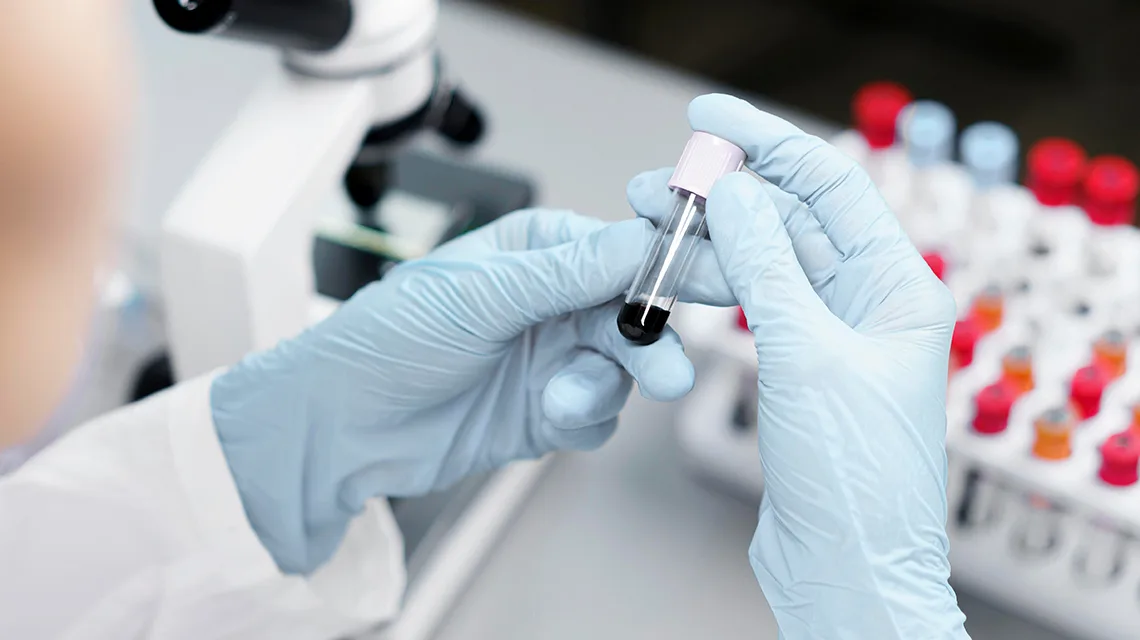Хематологични лечения
Hematological diseases are disorders that affect the blood and blood-forming organs. This group includes serious and sometimes life-threatening conditions such as leukemia, lymphoma, myeloma, aplastic anemia, sickle cell anemia, and thalassemia. Stem cell therapy, particularly through the use of hematopoietic (blood-forming) stem cells, offers a revolutionary approach in the treatment of these diseases. Today, stem cell transplantation is considered the only curative treatment for some hematological conditions.

What Are Hematopoietic Stem Cells?
Hematopoietic stem cells (HSCs) are specialized cells capable of differentiating into all types of blood cells (erythrocytes, leukocytes, platelets). They are typically sourced from bone marrow, peripheral blood, or umbilical cord blood. These cells enable the regeneration of damaged or depleted blood cells and can restructure the immune system.
Types of Stem Cell Transplantation
Autologous (Self-Derived) Transplantation: The patient’s own stem cells are collected in advance and reinfused after high-dose chemotherapy. Commonly used in diseases such as lymphoma and multiple myeloma.
Allogeneic (Donor-Derived) Transplantation: Stem cells are obtained from a genetically compatible donor. This method is preferred in diseases like acute and chronic leukemia, aplastic anemia, thalassemia, and sickle cell anemia. Its advantage lies in the complete replacement of the diseased immune system.
Cord Blood Transplantation: Stem cells collected from umbilical cord blood at birth. Especially used in pediatric patients due to its more flexible tissue matching requirements.
Main Hematologic Diseases Treated
Leukemia: Leukemia is a type of cancer resulting from the uncontrolled proliferation of white blood cells. Allogeneic stem cell transplantation can provide complete remission by replacing leukemia-destroyed cells with healthy stem cells. It is frequently used in aggressive types such as acute myeloid leukemia (AML) and acute lymphoblastic leukemia (ALL).
Lymphoma: In lymphoma, a cancer of the lymphatic system, autologous stem cell transplantation is often preferred after high-dose treatment in both Hodgkin and non-Hodgkin lymphoma types. It is an effective option, especially in relapsed cases.
Multiple Myeloma: In this bone marrow cancer caused by uncontrolled plasma cell proliferation, autologous stem cell transplantation is a standard part of treatment. Infusion of stem cells after high-dose chemotherapy can prolong remission periods.
Aplastic Anemia: A condition in which the bone marrow ceases blood cell production entirely. Allogeneic stem cell transplantation is vital in such cases, especially in young patients with a suitable donor.
Thalassemia and Sickle Cell Anemia: These hereditary blood disorders can be permanently treated with stem cell transplantation. Success rates are higher when performed during childhood. With newly developed gene-editing technologies, stem cell therapies are becoming even more effective in this field.
Stem Cell Transplantation Process
Preparation (Conditioning): High-dose chemotherapy and/or radiotherapy is administered to clear existing bone marrow.
Transplantation: Stem cells are infused into the patient through a vein.
Recovery and Monitoring: The new stem cells settle in the bone marrow and begin producing blood cells. Special precautions are taken during this period to prevent infections.
Potential Risks and Follow-Up
Graft-versus-host disease (GVHD): Occurs when immune cells from an allogeneic transplant attack the recipient’s body.
Infections: Frequently observed due to temporary immune suppression.
Organ Toxicities: May develop as a result of high-dose treatments.
Therefore, comprehensive pre-treatment evaluation and long-term post-transplant follow-up are critical.
Conclusion
Stem cell therapies have been successfully applied for many years in the treatment of hematologic diseases and are scientifically well-established. They are life-saving particularly in leukemia, lymphoma, and various types of anemia. Thanks to advancing technology and cell engineering, more effective, safer, and personalized treatment approaches are expected in the future.














